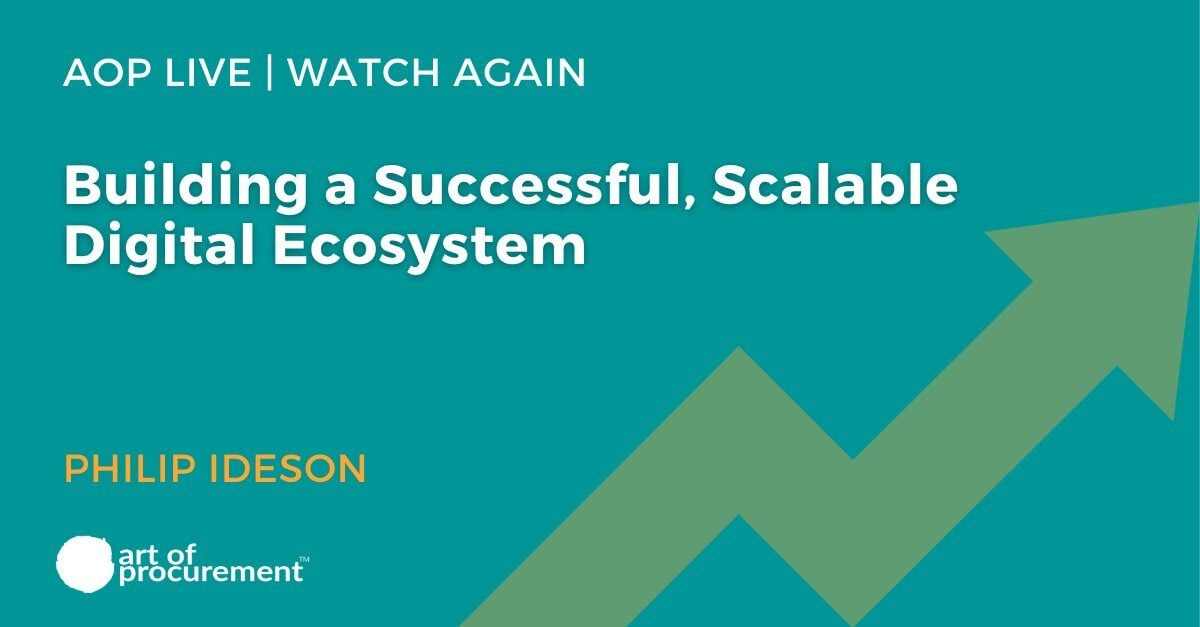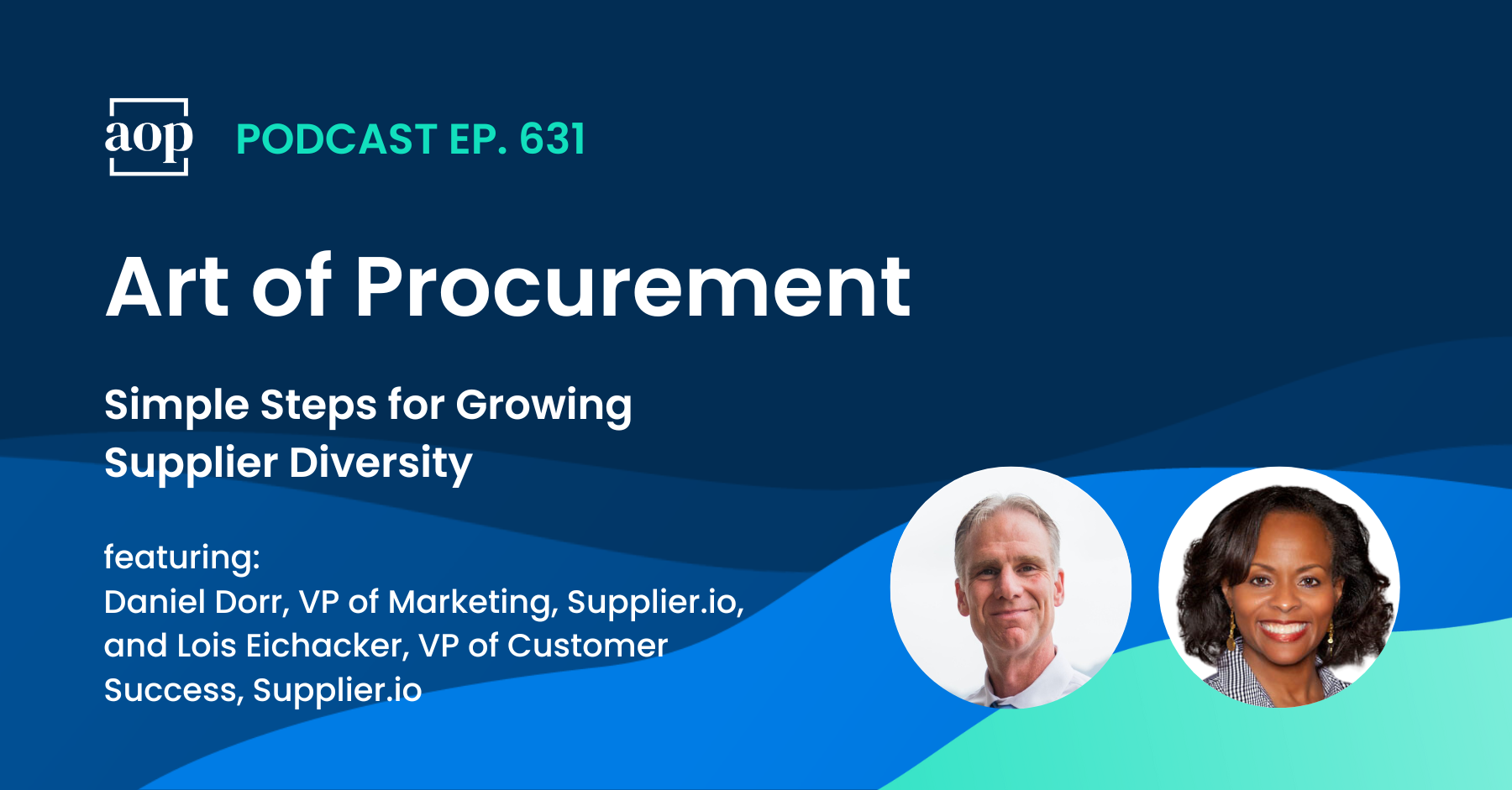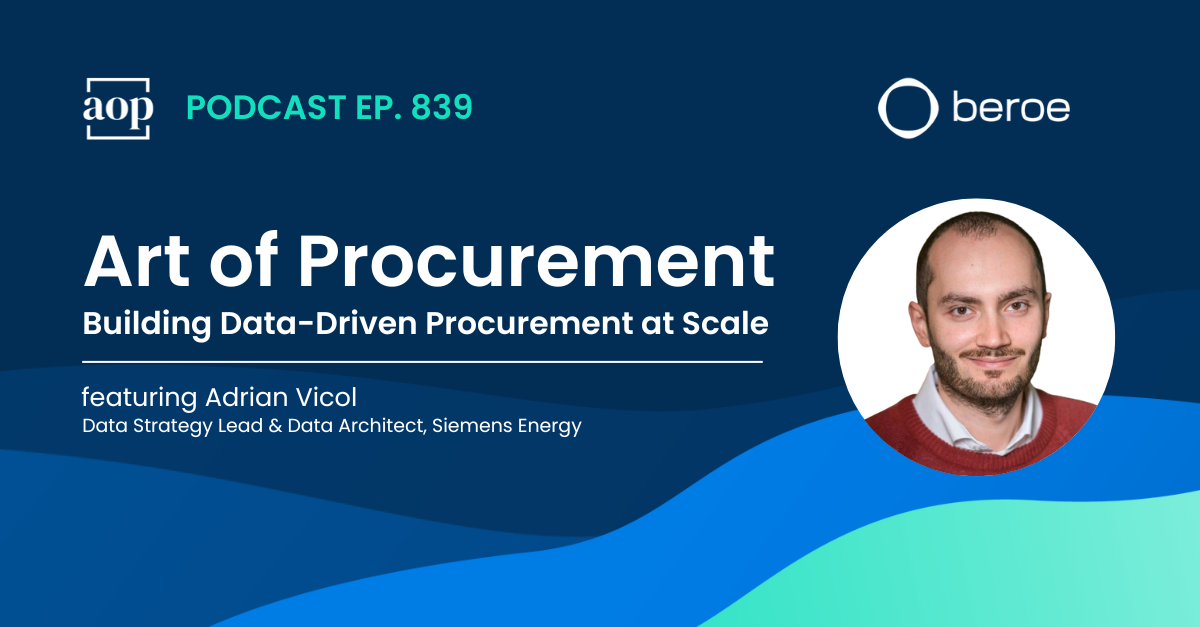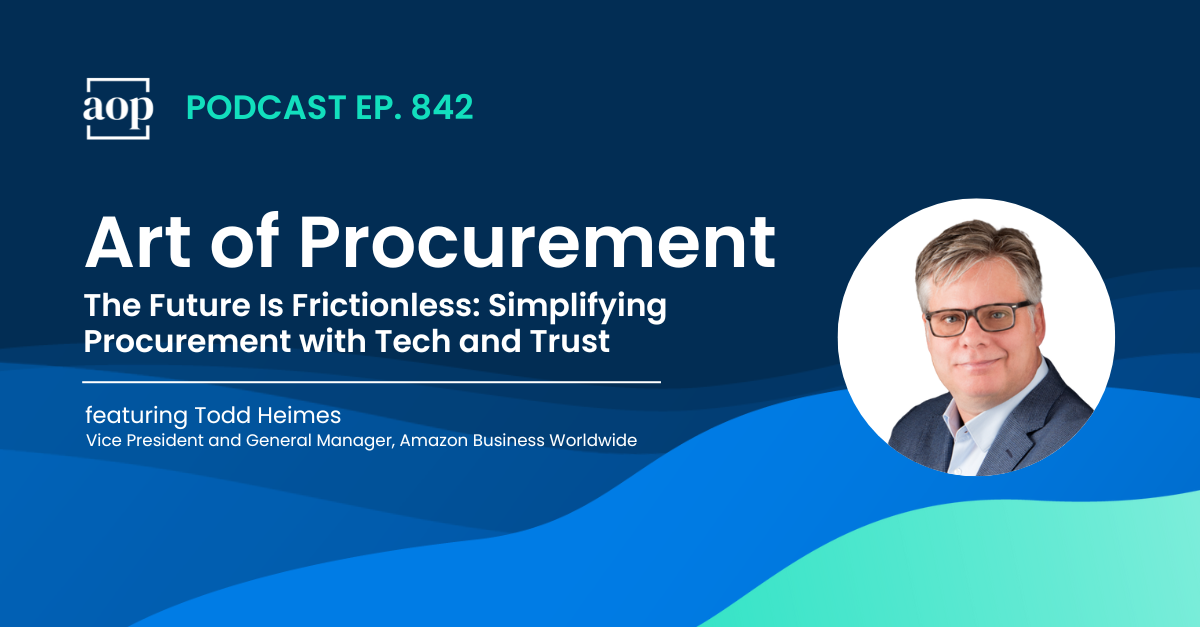
As procurement has been increasingly acknowledged as a complex and highly nuanced field, the idea of building out ecosystems has become steadily more popular. Procurement builds supplier ecosystems and digital ecosystems, both of which must ultimately fit within the operational ecosystem of the whole company. If you think that sounds extremely challenging, you’re not alone, but when approached with forethought and solid business objectives it doesn’t have to be an unattainable goal.
In a recent AOP Live session, How to Supercharge Your Digital Procurement Strategy, Philip Ideson was joined by three members of the WNS Denali team: Alpar Kamber, EVP and Business Unit Leader, Julie Brignac, EVP of Global Growth and Client Success, and Chris Eyerman, Head of Digital Innovation.
The conversation started with their advice for putting important discussions and decisions in order:
- Clear Objectives: What does the business need?
- Vision: What is procurement’s role in supporting the business?
- Strategy: How exactly will procurement deliver against business requirements?
- Digital: What technology will accelerate procurement’s efforts without creating friction for the business?
Starting with Vision
According to Alpar, too many procurement teams start with digital and then try to figure out what their vision is going to be. Doing so not only limits procurement’s potential for value creation, but it also risks procurement falling out of alignment with the business.
Digital transformation is important, but it is not an end in and of itself. Procurement leaders must start by defining their strategy and then ensure that their digital investments advance it – not the other way around.
Julie added to that idea by pointing out that even the best digital tools can fix a broken or suboptimal process. Therefore, it is critical for procurement to establish vision and strategy first, and then implement technology to support both.
Understanding the Ecosystem Concept
Although digital is a significant component of an ecosystem, the ecosystem can exist without digital. Much like vision and strategy, digital solutions then enable the ecosystem and ensure that it functions at scale and in a healthy way.
Procurement has always needed to reconcile competing priorities: suppliers, payments, stakeholders, and strategic sourcing. What has become clear over time is that to be effective, procurement has to operate as a fully integrated system. Each of the interested parties and process considerations must be supported in parallel.
There has always been an ecosystem, but procurement wasn’t necessarily managing it. Today, however, they realize the importance of actively managing all their stakeholder groups and business objectives at the same time. Procurement must look at the whole ecosystem by connecting all the dots: data, ERP systems, digital, process, internal and external knowledge. This understanding has completely changed how leading companies manage procurement.
As procurement and the organization mature and evolve, the ecosystem must do the same. Procurement’s ecosystem is one system within the whole. If other players (internal or external) might be affected, procurement must maintain visibility and be as proactive as possible.
Procurement as Ecosystem Influencer
Each interaction procurement has with stakeholders is an opportunity to influence their perspectives and decisions and to ensure that procurement retains their attention. It requires a lot of maturity on procurement’s part to take such a long-term approach, but it is the best way to stay on the path and preserve the ecosystem.
Change is inevitable, but it doesn’t have to bring pain. Pain is a symptom of friction, and friction is a sign that procurement (or their processes or technology) has fallen out of alignment with the business. Technology may be able to improve scale or bandwidth, but it cannot typically reduce friction that is rooted in ill-fitting processes.
Chris spoke about a particular risk in this area: entropy, or the measure of disarray or chaos in a system. Every digital implementation should reduce rather than increase the level of entropy within the system – for every member and every participant.




